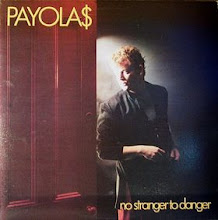 In my review of Batman and Robin, the 1949 serial from Sam Katzman, I noted that one of the key reasons the serial works despite the clear and abundant flaws is due to the innocence of the whole effort. It set out to tell a Batman and Robin adventure, and low budget (and narrative logic) be damned, it did it with enthusiasm.
In my review of Batman and Robin, the 1949 serial from Sam Katzman, I noted that one of the key reasons the serial works despite the clear and abundant flaws is due to the innocence of the whole effort. It set out to tell a Batman and Robin adventure, and low budget (and narrative logic) be damned, it did it with enthusiasm.I cannot, however, give the same good will towards the first ever live action Batman film, the 1943 serial Batman, produced by Columbia pictures and directed by Lambert Hillyer. While the film comes out of the same low budget roots as the latter film, Batman is not a simple adventure serial, but rather a piece of war time propaganda designed to drum up anti-Japanese sentiment. The film is thus full of racist caricatures and slurs, with an extremely jingoistic attitude permeating every frame of the film. While the context out of which the film was produced may make these elements understandable, it doesn’t make them any less uncomfortable in the context of a boy’s adventure serial. And even if one is able to watch with the understanding of why the film is what it is, it doesn’t change the fact that the serial isn’t really all that good.
 In Batman, Batman and Robin (Lewis Wilson and Douglas Croft) are secret crime fighters who work for the United States government. In Gotham City, a Japanese spy and master criminal, Prince Tito Daka (J. Carrol Naish) operates, taking control of the criminal underworld and seeks to sabotage the United States war effort. It is up to Batman and Robin to stop Daka, but can they do so when Daka possesses a league of zombies at his command (old style zombies, not the Romero flesh eaters) and a deadly radiation gun?
In Batman, Batman and Robin (Lewis Wilson and Douglas Croft) are secret crime fighters who work for the United States government. In Gotham City, a Japanese spy and master criminal, Prince Tito Daka (J. Carrol Naish) operates, taking control of the criminal underworld and seeks to sabotage the United States war effort. It is up to Batman and Robin to stop Daka, but can they do so when Daka possesses a league of zombies at his command (old style zombies, not the Romero flesh eaters) and a deadly radiation gun?As an adaptation of the Batman character, the 1943 serial is an abysmal failure. Since his first appearance in 1939, Batman has always been an aggressively individualistic character, working for the law by working outside it, and on his own terms. While the comics of the 1950s and the 1960s television adaptation tried to mitigate this element of the character, it has never been able to be fully purged, and it is one of the most appealing elements of the character. He is totally uncompromising in his fight against crime, but it is a personal war, not one beholden to any specific country or ideology. In transforming Batman into a government agent, that individualism is lost, as his quest is subsumed into the larger war effort.
 The film however cannot even get the concept of a ideologically driven Batman right. Lewis’ Batman is less of a crime fighter and more of an overgrown man-child looking for excitement. There is no sense of commitment or drive to his Batman: he instead opens up his assignments from Washington like a kid opening a Christmas gift, and more often than not seems to have no interest in the people he is supposedly trying to help. In fact, Lewis’ Batman is a mean spirited individual, viciously pulling pranks on his Alfred and treating his supposed romantic interest Linda (Shirley Patterson) with outright contempt and negligence. If this were a persona to throw people off from figuring out that he is Batman it would have been one thing, but here, this is simply who Batman is. At least Croft’s Robin is likeable enough to balance out Wilson’s failings as our “hero.”
The film however cannot even get the concept of a ideologically driven Batman right. Lewis’ Batman is less of a crime fighter and more of an overgrown man-child looking for excitement. There is no sense of commitment or drive to his Batman: he instead opens up his assignments from Washington like a kid opening a Christmas gift, and more often than not seems to have no interest in the people he is supposedly trying to help. In fact, Lewis’ Batman is a mean spirited individual, viciously pulling pranks on his Alfred and treating his supposed romantic interest Linda (Shirley Patterson) with outright contempt and negligence. If this were a persona to throw people off from figuring out that he is Batman it would have been one thing, but here, this is simply who Batman is. At least Croft’s Robin is likeable enough to balance out Wilson’s failings as our “hero.”These problems with our hero go beyond Wilson’s performance however, as the filmmakers set about making Batman the saddest superhero committed to film. Batman is repeatedly beaten by the criminals he is after, and more often than not, it is either Robin and/or Alfred who are bailing him out of trouble. The final chapter of the serial actually involves Batman being sidelined until Robin rescues him and subdues the villain. While I am all for a fallible hero, in making Batman this inept, there is no sense as to why anyone should be interested in following his adventures.
 Then, there is the racism. Now, while it is certainly true that the film is a product of its time, this in no way forgives the vitriol in which the film engages with such attitudes. The whole film seems to seethe in an open desire to attack the Japanese at any given moment, and there is rarely a moment in the film that goes by without some form of anti-Japanese sentiment raising its head. Some of it is so absurd that it could almost be laughed off, such as a scene in which an American criminal gives a bafflingly patriotic speech, but then the film heads down much more serious territory, including an unsettling moment when Batman himself starts using racial slurs against Daka. Perhaps no moment sets the venomous tone of the film more than an early scene in which the narrator points out the “wisdom” of the interment camps which Japanese Americans were placed into during the war. The moment lays bare the film’s intent, and it is hard to try and see the film as anything more than a historical artifact of war time propaganda afterwards.
Then, there is the racism. Now, while it is certainly true that the film is a product of its time, this in no way forgives the vitriol in which the film engages with such attitudes. The whole film seems to seethe in an open desire to attack the Japanese at any given moment, and there is rarely a moment in the film that goes by without some form of anti-Japanese sentiment raising its head. Some of it is so absurd that it could almost be laughed off, such as a scene in which an American criminal gives a bafflingly patriotic speech, but then the film heads down much more serious territory, including an unsettling moment when Batman himself starts using racial slurs against Daka. Perhaps no moment sets the venomous tone of the film more than an early scene in which the narrator points out the “wisdom” of the interment camps which Japanese Americans were placed into during the war. The moment lays bare the film’s intent, and it is hard to try and see the film as anything more than a historical artifact of war time propaganda afterwards. There are aspects of the serial however that are worthy of mention. While he plays the role for laughs, William Austin’s Alfred is actually one of the few parts of the film that works, even though he is victimized by those he serves. Placed in various disguises and situations he shouldn’t be in, Alfred does manage to get a few real laughs throughout the film. And the opening theme sets the mood perfectly, and as it plays over the Columbia logo, it feels reminiscent of the Danny Elfman Spider-man theme. Unfortunately, nothing in the serial lives up to the expectations set up by the music.
There are aspects of the serial however that are worthy of mention. While he plays the role for laughs, William Austin’s Alfred is actually one of the few parts of the film that works, even though he is victimized by those he serves. Placed in various disguises and situations he shouldn’t be in, Alfred does manage to get a few real laughs throughout the film. And the opening theme sets the mood perfectly, and as it plays over the Columbia logo, it feels reminiscent of the Danny Elfman Spider-man theme. Unfortunately, nothing in the serial lives up to the expectations set up by the music. When it comes down to it, Batman is of little note: As an artifact of World War II era filmmaking, it is only one among many example;. serious film serial fans will likely find it forgettable and a poor representation for the format. As for diehard Batman fans, the film is a must watch, but only from the perspective of the character's evolution into a cultural icon.
When it comes down to it, Batman is of little note: As an artifact of World War II era filmmaking, it is only one among many example;. serious film serial fans will likely find it forgettable and a poor representation for the format. As for diehard Batman fans, the film is a must watch, but only from the perspective of the character's evolution into a cultural icon.


Are you planning on reviewing the new Batman: Under The Red Hood animated feature that came out today? I got mine from Zip yesterday, so I'll be watching it soon. I'm seeing Scott Pilgrim at a festival today though, so that takes precedence!
ReplyDeleteP.S. Did you hear about DCU's upcoming slate of animated films from Comic-Con? ALL-STAR SUPERMAN is happening. I think that has a strong chance of being the best movie of 2011.
Just picked up my copy of Under the Red Hood, and while I should review Inception first, I am tempted to watch UtRH tonight and post it on Friday instead.
ReplyDeleteAnd once again, I have re-edited my review to improve the mistakes I really should have caught before posting. I really, really need to find a reliable editor for this thing.
I was ten years old in 1956 when i first saw the 1943 Batman serial. I was already a Batman fan so watching this serial for the first time was more than exciting. It wasnt a great serial but it did have a lot of good moments. this serial gets a lot of over analyzing but most werent 10 years old in 1956. Noyer does a pathetic review on just about every aspect. Its like condemming the whole era of 1943, but that was just the way it was.
ReplyDelete